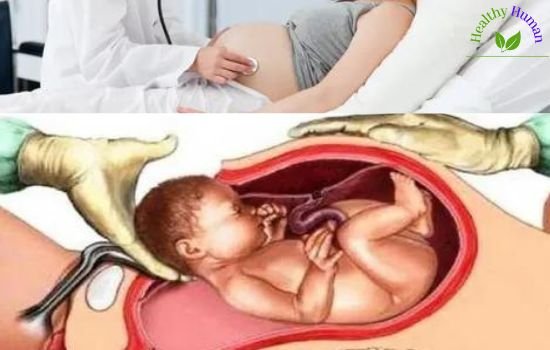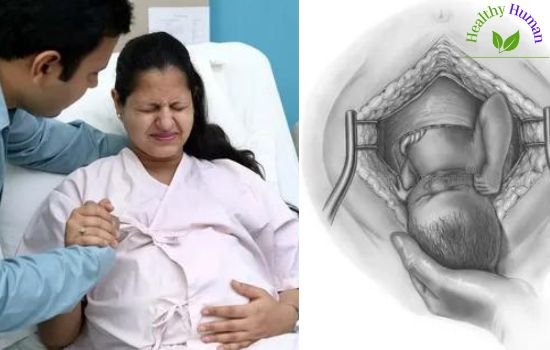As the baby’s head squeezes through, your vagina will most certainly tear. Perineal tearing affects 95 percent of first-time mothers. You may require stitching, and depending on the severity of the rip, healing can take weeks to months. Coughing, sneezing and having a bowel movement are all likely to cause discomfort. Your scars may be healing if you have an itchy vagina after birth. What’s normal or what’s not normal are some things you can do to help soothe your lady parts and make you feel a lot better less postpartum pain and then help you heal as quickly as possible.
Side Effects During Vaginal Birth Recovery

Another unfavorable side effect of childbirth is lochia, which is a six-to-eight-week period of vaginal discharge of blood, mucus, and uterine tissue. Lochia begins bright and hefty, then fades to dark brown and finally yellow. It may cause moderate vaginal odors after birth, but any foul-smelling odor should report to your doctor.
Swelling is also prevalent, and hormonal changes might cause dryness. Your lady bits will most likely return to normal within a few months, although some women report that their vagina feels loose after giving birth, especially if they had a large baby. However, weak vaginal muscles can cause you to feel loose down there, and Kegel exercises can help tighten the vagina.
So, how does a vagina look after birth? Because of the increased blood flow, the labia may seem darker immediately after delivery. However, the vaginal area before and after birth will not significantly change.
Your infant may be your top focus, but postpartum care is also important. What to expect as you recuperate from a vaginal delivery, from soreness to discharge.
Pregnancy alters your body in ways you might not expect. And it doesn’t end after the child is born. Here’s what to expect physically and emotionally following vaginal birth.
Here’s what You Can Do To Boost Vaginal Birth Recovery.

Vaginal Soreness During Vaginal Birth Recovery
Your perineum (the area between your vagina and rectum) may stretch and rip during labor, which can be painful. If you have an episiotomy, which is when your doctor makes a little cut in your vagina to help your baby come out, your postpartum discomfort may be severe.
Stitches may use to close tears or injuries in your perineum. It could take up to 6 weeks to heal. The stitches will eventually absorbed by your body. Meanwhile, avoid touching your stitches and contact your doctor if they get more painful, red, or weep fluid.
To reduce pain at home:
To relieve pain and swelling, apply an ice pack or cold pack to the affected area. Instead of a hard surface, sit on a pillow.
To keep the area clean when peeing, fill a squirt bottle with warm water. When you need to urinate, place a clean pad or washcloth against the sore spot and wipe from front to back. This will relieve your pain and help you avoid infection.
Vaginal Discharge During Vaginal Birth Recovery
Vaginal bleeding and discharge are usual for several weeks following delivery. This is your body’s approach to eliminating the extra tissue and blood that sustained your baby during your pregnancy.
Initially, you will notice brilliant red blood that will gradually fade, turning reddish to brownish, then yellow or creamy before disappearing. The first 10 days may be the most difficult. You might pass some blood clots. This is most typical within the first week of life. If the clots are larger than a quarter, contact your doctor.
It will gradually reduce to light bleeding and spotting and will normally end about 6 weeks following delivery.
While you have vaginal discharge, use sanitary pads rather than tampons. Tampons can cause bacteria into your vagina, which can lead to illness.
Afterpains
Contractions are common for a few days following delivery. They can feel similar to cramping during your period. They occur as your uterus shrinks, going from roughly 2.5 pounds immediately after delivery to just a few of ounces 6 weeks later.
Because breastfeeding releases chemicals in your body that cause your uterus to thicken, you may sense these pains more when you’re nursing your baby. You can apply a heating pad to your stomach or ask your doctor if using an over-the-counter pain medicine is safe.
Constipation
You may have difficulty pooping after giving birth. This is frequently a side effect of the pain medication you were given during delivery. You may be concerned that shifting your bowels will damage your stitches if you undergo an episiotomy.
Drink plenty of fluids and eat fiber-rich meals to relieve constipation. Consult your doctor about using a stool softener.
If you get hemorrhoids (swollen veins in your lower abdomen) after giving birth, try applying witch hazel to relieve discomfort and itching.
Diarrhea
You could have the opposite issue. During labor, the muscles and tissue in your rectum might be stretched or torn, causing you to leak gas and excrement. Poop might escape more easily if you have hemorrhoids that come out of your anal orifice. It normally improves after a few months of delivery.
Your doctor may prescribe medicine to manage diarrhea or gas depending on the cause. Keep an eye on your diet: Some people have diarrhea when they consume dairy, gluten, or fatty meals, as well as artificial sweeteners. Kegel exercises, in which you clench your pelvic muscles as if you were stopping your pee in the middle of it, can also assist.
Trouble Peeing
Vaginal delivery causes bladder stretching and can cause nerve and muscle damage for a short period of time. That can make it hard to go to the restroom even when you feel the urge.
To relieve the sting of pee, try splashing water over your genitals while seated on the toilet.
You may also notice that when you cough or laugh, you leak a little. This should improve on its own. Kegel exercises can help you recover faster. Experiment with clenching your muscles for 5 seconds five times in a row. Work your way up to 10 repetitions in a row until you’re doing at least three sets of 10 reps per day.
Breast Swelling and Soreness
Your breasts produce colostrum, a nutrient-rich material that helps build your baby’s immune system, for the first 3-4 days after delivery. Your breasts will then enlarge as they fill with milk.
Nursing or pumping can help to reduce swelling and soreness. Use cold washcloths on your breasts in between feedings as well.
Wear a sturdy, supportive bra if you aren’t breastfeeding. Avoid touching your breasts, as this will just cause them to produce more milk.
Hair and Skin Changes
Don’t be alarmed if your hair begins to thin in the first 3-4 months after giving child. This is caused by changes in hormone levels. High quantities of hormones caused your hair to grow faster and fall out less when you were pregnant.
Stretch marks in red or purple may also appear on your tummy and breasts. They won’t go away completely, but they will fade with time.
Feeling Blue
In the early days of parenthood, you may experience a roller coaster of emotions, including concern, anxiety, and weariness, after bringing your kid home. This is known as the “baby blues,” and it is caused by hormonal changes.
Call your doctor if you feel this way for more than a couple of weeks. You could be suffering from postpartum depression, a more serious disease that requires treatment, like as talk therapy.
A Sitz Bath
During vaginal birth, it is normal for first-time mothers to tear their perineum (the area between the vulva and the anus). Fill a sitz bath or basin with warm water to ease discomfort. This boosts blood flow to the area, allowing it to mend and rebuild tissues more quickly.
You can perform a sitz in a clean bathtub or using a kit provided by many hospitals in the postpartum ward. “You lay a small, shallow basin above the toilet seat, fill it with warm water, and sit on it so your vulva and perineum are buried,” Page explains. “Fill the bath with three to four inches of water—just enough to cover your hips and buttocks—and sit.” Soak for 30 minutes for each.
A Spray Bottle
Postpartum peeing is made more difficult by your ripped and enlarged vagina after birth. The peri bottle is your new best friend: a little, portable plastic squirt container.
Simply fill it with lukewarm water and spray yourself while peeing to dilute the stinging potential of urine. Furthermore, the warm water is comforting to your delicate tissues. “Avoid spraying water straight into the vagina, though, since this will cause greater discomfort,” says Kelly Kasper, M.D., an OB-GYN at Indiana University Health in Indianapolis. Give yourself additional squirts after peeing to rinse off blood and urine—and to avoid the entire cringe-worthy toilet paper issue. “Believe me, the less touching, the better,” says Katie Page, a trained nurse-midwife in Lynchburg, Virginia.




